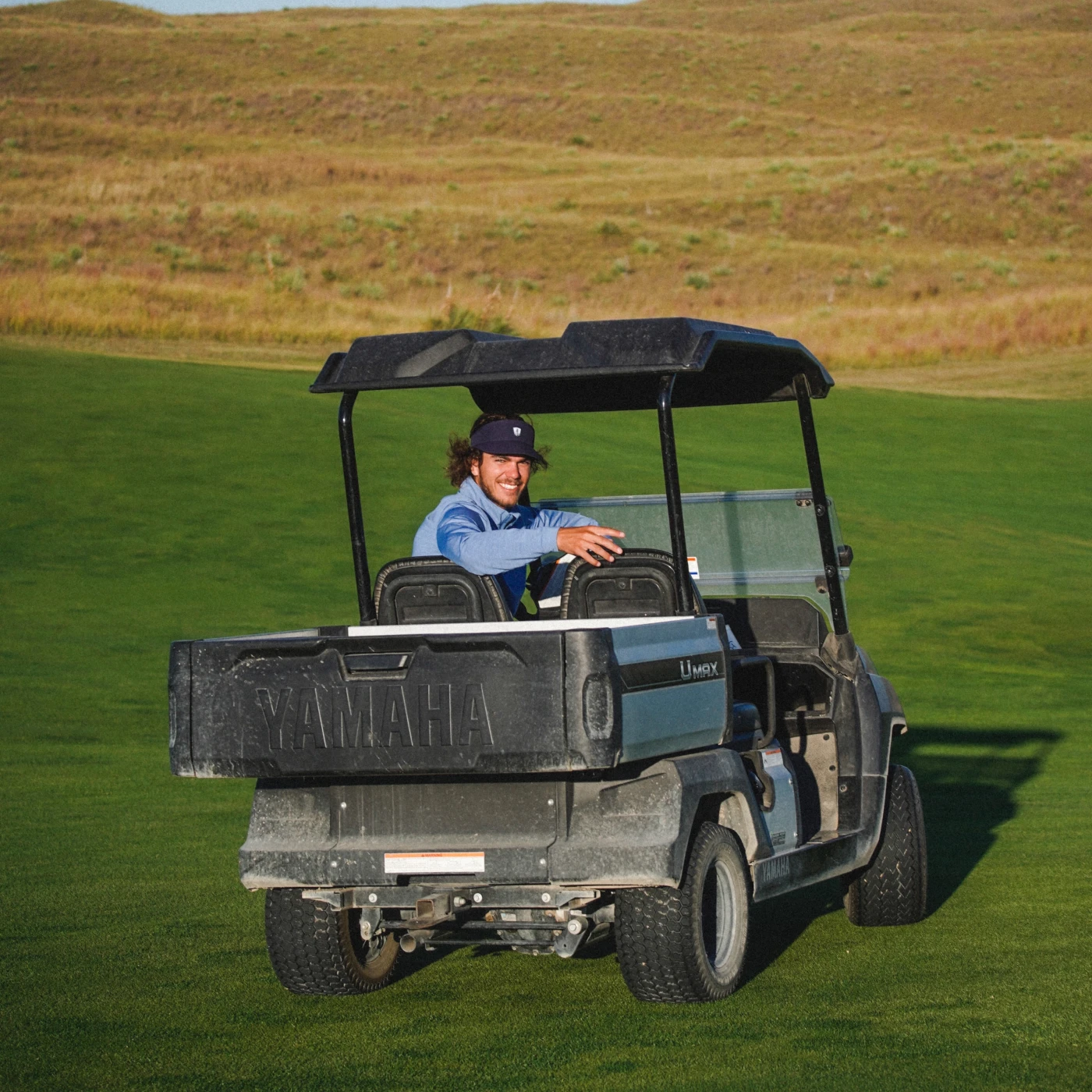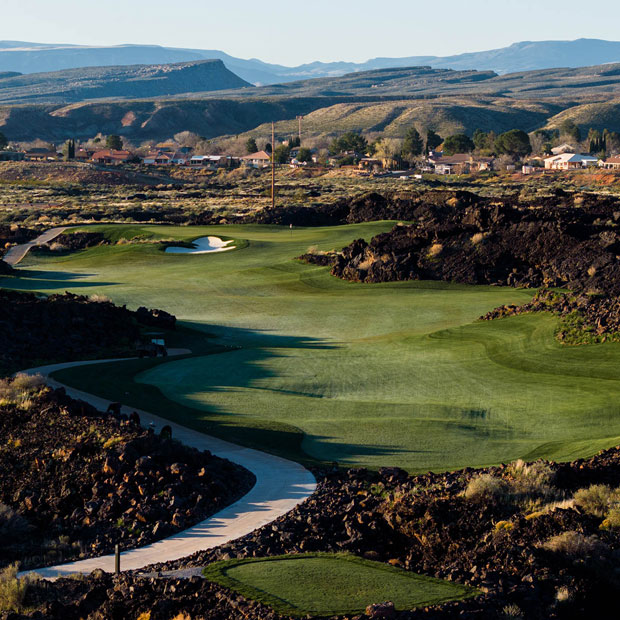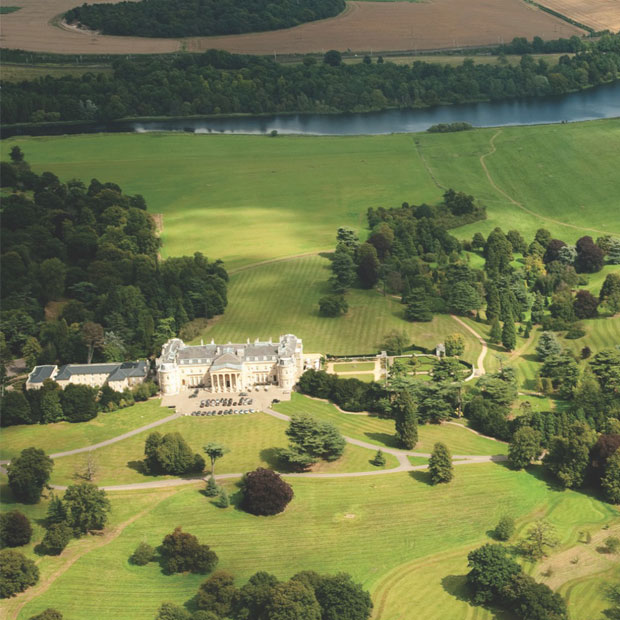Annesley Links at Royal County Down Golf Club
Sitting in the shadow of arguably the greatest golf course in the world, the Annesley Links is the perfect complement to the stern test of Royal County Down’s Championship course

Newcastle, Northern Ireland
Old Tom Morris (original design, 1889), Harry Colt (renovations, 1925), Donald Steel (redesign, 1997, 2004), Mackenzie & Ebert (redesign, 2015)
Semi-Private
$$$
Sitting in the shadow of arguably the greatest golf course in the world, the Annesley Links—or “wee course”—at Royal County Down is a perfect complement to the stern test of the Championship course. The two links are intertwined within the same majestic dunesland, providing tremendous views of the Irish Sea and towering Mourne Mountains. Although short in scorecard yardage, the wee course provides a unique test of accuracy and precision. Annesley asks players different questions than its neighboring big brother, making for a round you must not miss when visiting Royal County Down.
{{content-block-course-profile-annesley-links-at-royal-county-down-golf-club-001}}
Take Note…
Annesley Estate. The land housing all 36 holes at Royal County Down was originally called the Warren. George Baillie of the Royal Belfast Golf Club (1891), on a mission to develop the game throughout the province, visited Newcastle in search of land for golf. He discovered the Warren north of town, which proved to be an excellent natural piece of land for golf. Permission was then sought and granted from the land owners, the Annesley Estate, to build the course here. In return, Lord Annesley would become the first president of the County Down Golf Club.
R.C.D.L.G.C. The Royal County Down Ladies Golf Club formed in 1894. The clubhouse sits adjacent to the first tee and 18th green of the Annesley Links, originally known as the Ladies Course. Annesley Links measures 4,500 yards and was designed at the time to suit the women’s game.
Mackenzie & Ebert. The duo redesigned the course in 2015. In the process, they added the three most dramatic holes on the course, all of which play around the largest dune on the property. They replaced holes on the flatter western side of the property with a driving range and added those three spectacular golf holes overlooking the sea. Note that the 17th green of today’s routing was originally a par 3 playing from another direction, making certain pins very tricky from the left side of the fairway.
Favorite Hole
No. 6, par 4, 338 yards
The walk from the fifth green to sixth tee crosses over the 13th fairway (aka, Gorse Valley) on the Championship links and enters the section of the property with the most dramatic dunes.
Favorite Hole
No. 6, par 4, 338 yards
The walk from the fifth green to sixth tee crosses over the 13th fairway (aka, Gorse Valley) on the Championship links and enters the section of the property with the most dramatic dunes.
The sixth is a narrow, short par 4 that gently doglegs around a dune ridge into which the green is nestled. The fairway itself is 25 yards wide and features some tumultuous contours that I quickly became infatuated with. The randomness and scale of the contours are simply beautiful for golf, allowing the hole to be bunkerless. Missing left or right in the native grasses here likely means a lost ball, as all four members of our group discovered. The green is small and perfectly situated up in the dunes, with a steep falloff on the left.
This hole exemplifies all the great things about the Annesley Links: shotmaking, precision, creativity, randomness, and fun, all in an idyllic setting. I love this golf hole.

{{content-block-course-profile-annesley-links-at-royal-county-down-golf-club-002}}
The concept of a “short course” differs greatly between Ireland and the United States. In America, short courses are typically add-ons to 18-hole facilities and adopt a more pitch-and-putt style, with most of the holes under 150 yards. Many of the “wee” courses in Ireland, on the other hand, are a mixture of par 3s, 4s, and 5s. These holes typically add up to a total yardage less than 5,500 yards, substantially shorter than is typical for “championship” golf. These Irish courses offer tremendous shot-making variability while still allowing for quick rounds.
This raises an obvious question: why do short courses in America differ so much from those in Ireland?
I think the answer has to do with the age of the asset. Links courses in the UK and Ireland are simply older than American golf courses; thus, many are shorter in length. Equipment advances made many of these historic links courses obsolete, and clubs were forced to extend their championship links to continue to challenge stronger players. These changes usually necessitated compromising parts of their secondary courses in the search for more space to add distance and maintain relevance. Ultimately, the secondary or “wee” courses at many of these Irish clubs are more representative of what golf was like in the late 19th and early 20th centuries. Never the priority for distance-based renovation, they were allowed to remain fairly untouched while occupying the ancillary land surrounding an ever-evolving championship links.
Resorts and clubs in the U.S, on the other hand, have married themselves to a short-course concept of somewhere between nine and 18 par-3 holes, all of which measure under 150 yards. The American short course has proven successful in various ways, but they feel one-dimensional when compared to the great wee courses of Ireland. While these par-3 short courses are certainly welcome additions to many golf facilities, I’d love to see them become more unique and varied, offering more par 4s and par 5s, as well as some outside-the-box shotmaking tests instead of just a collection of par 3s with wild greens.
The Annesley Links at Royal County Down still retains its old-school length and scale despite the several alterations to the course over the years. Most of the changes to the wee course coincide with changes to the Championship links or were done to make room for practice areas, but no changes were made to lengthen Annesley or make it more challenging for modern standards. This has been an enormous benefit to the Royal County Down Golf Club, as it resulted in two incredibly different golf courses on the same magical seaside dunesland.
Playing over the most gentle terrain on the property, the outward holes of the Annesley Links border the finishing stretch of the championship course. The par-3 third hole begins the journey closer to the towering dunes, and the fourth is where the land really begins to shine. No. 4 has some incredible fairway movement that makes accuracy off the tee key to finding a generous approach angle. The green is perched on a dune that requires precise distance control to stay atop the putting surface. This is where the course starts to gain momentum.

Holes 5 through 15 are akin to a rollercoaster. Playing up, down, and around the trademark towering dunes, the holes take you on a ride similar to the big course but on a much more intimate scale. This small footprint makes for a much different style of golf, a style that requires the kinds of finesse and creativity that have faded from the modern game. Hitting fairways is paramount to achieving the angles required to knock the ball close to the hole. This isn’t an easy task, even with an iron in your hands, because most fairways are less than 30 yards wide. This means that many holes are two-part questions with hundreds of possible solutions.
The eighth hole, for example, is a phenomenal 265-yard par 4 on which all of us played vastly different golf shots. The hole plays along a ridgeline that falls off on either side of the fairway. There is a pronounced ledge on the right side of the fairway that provides the optimal angle into the green. All of us were inside 100 yards off the tee, but only two of us found the ideal ledge, while the other two found the right and left rough, respectively. Only one ball from the rough found the green via a mid-iron bump, while the other had to be hacked out of the native vegetation. Brendan Porath, from the optimal ledge, opted for a Texas wedge from well over 60 yards, leaving himself about 20 feet. I was also on the ledge and hit a chippy gap wedge to about 10 feet. This hole embodies many of the themes at the Annesley Links. Finding the right spots off the tee affords you various options to fly or run the ball into the greens, while missing fairways creates tough angles to knock the ball close.
{{content-block-course-profile-annesley-links-at-royal-county-down-golf-club-003}}
Note: For this round we only brought four clubs plus a putter and played a skins game with stymies. The conditions were quite miserable, to say the least (raining, blustery, and cold), but this format made for one of the most enjoyable rounds of my life. So I urge you to take the driver and/or several clubs out of the bag in order to force yourself into creative shot making. You won’t be disappointed.

The new holes at the Annesley Links—Nos. 9, 10 and 11—are an awesome addition, providing plenty of drama halfway through the round. These three holes are routed around the massive dune that lies behind the third green on the Championship layout. They fit in fairly well with the existing routing, though there is a lengthy walk from 11 green to 12 tee. While these holes are extremely bold and well designed they don’t seem to have the same natural charm and linksy randomness as the rest of the course.
From there, you begin the trek back to the clubhouse with holes 12 through 15, which play through the rolling dunes in the middle of the back nine of the Championship course. The wee links then returns to the flatter southwestern side of the property, concluding one of the most varied and enjoyable short courses in the world.
2 Eggs
Several holes at the Annesley Links are just as good as those on the far more famous Championship course. The sandy, fescue-covered ground provides an optimal playing surface that allows for variety and creativity. If the southwestern corner where the course starts and finishes had a little more pizazz, and the overall routing flowed together more smoothly, it would gain its final Egg.
Course Tour

{{content-block-course-profile-annesley-links-at-royal-county-down-golf-club-004}}
Additional Reading, Listening, and Viewing
A post shared by Fried Egg Golf (@fried_egg_golf)
Leave a comment or start a discussion
Get full access to exclusive benefits from Fried Egg Golf
- Member-only content
- Community discussions forums
- Member-only experiences and early access to events





.jpeg)









Leave a comment or start a discussion
Lorem ipsum dolor sit amet, consectetur adipiscing elit. Suspendisse varius enim in eros elementum tristique. Duis cursus, mi quis viverra ornare, eros dolor interdum nulla, ut commodo diam libero vitae erat. Aenean faucibus nibh et justo cursus id rutrum lorem imperdiet. Nunc ut sem vitae risus tristique posuere. uis cursus, mi quis viverra ornare, eros dolor interdum nulla, ut commodo diam libero vitae erat. Aenean faucibus nibh et justo cursus id rutrum lorem imperdiet. Nunc ut sem vitae risus tristique posuere.